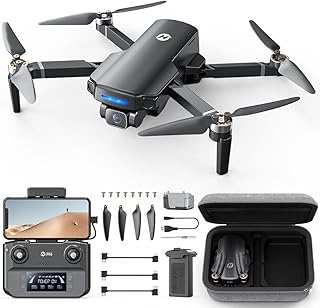Drones and the Environment: A Powerful Tool with Potential
Drones are rapidly becoming an invaluable asset in environmental management and conservation efforts. Their ability to access remote and dangerous areas, collect data efficiently, and provide real-time insights offers significant benefits for monitoring, research, and conservation.
Monitoring:
* Wildlife Tracking: Drones equipped with high-resolution cameras can track wildlife populations, monitor their movements, and identify potential threats. This information is crucial for conservation efforts and understanding wildlife dynamics.
* Forest Fire Detection: Drones can detect wildfires at their early stages, allowing for swift response and reducing the risk of large-scale damage. Thermal cameras can also be used to monitor forest health and detect disease outbreaks.
* Pollution Monitoring: Drones can measure air quality, map pollution hotspots, and monitor environmental changes over time. This data is vital for environmental policymaking and pollution control.
* Environmental Impact Assessment: Drones can survey and map areas affected by development projects or natural disasters, providing valuable data for environmental impact assessments and mitigating damage.
Conservation:
* Habitat Mapping: Drones can map habitats, assess their health, and identify areas for conservation. This data helps prioritize conservation efforts and allocate resources effectively.
* Species Protection: Drones can monitor endangered species, track their movements, and identify illegal poaching activities. This information assists in protecting vulnerable species and their habitats.
* Reforestation and Restoration: Drones can be used to plant trees, distribute seeds, and monitor the success of reforestation and restoration projects.
Beyond Monitoring and Conservation:
* Search and Rescue: Drones can be used to locate missing persons and provide assistance during natural disasters.
* Climate Change Research: Drones can collect data on glacier melt, sea level rise, and other climate change indicators.
* Agriculture and Food Security: Drones can be used for precision farming, crop monitoring, and identifying potential pest outbreaks.
Challenges and Considerations:
* Privacy and Security: Drones raise concerns about privacy and the potential for misuse. Regulations are needed to ensure responsible drone use and data collection.
* Environmental Impact: The use of drones can have environmental impacts, such as noise pollution and disturbance to wildlife. Minimizing these impacts requires careful planning and consideration.
* Safety and Regulation: Strict safety protocols and regulations are essential to ensure the safe operation of drones and prevent accidents.
The Future:
As drone technology advances, we can expect even greater contributions to environmental management and conservation. The development of autonomous drones, advanced sensors, and AI-powered data analysis will further revolutionize our understanding and protection of the environment.
Conclusion:
Drones are a valuable tool for environmental monitoring, conservation, and research. Their potential to transform our approach to environmental challenges is significant. However, it's crucial to address the ethical, legal, and environmental considerations associated with their use to ensure sustainable and responsible application.


